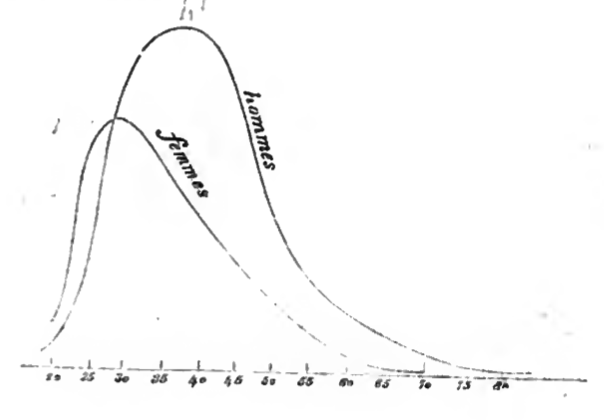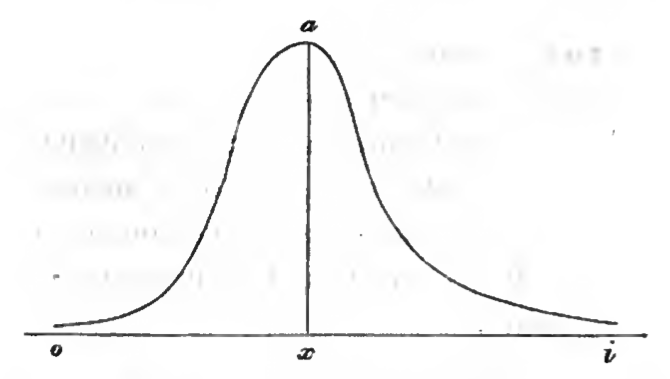Le Systeme Social
1844

Tendency to marry for men and women
(Quetelet, 1844)
Possibility of criminal behaviour for 30 year old men
(Quetelet, 1844, p.93)It was Quetelet’s less-noticed next step, of 1844, that counted far more than the average man. He transformed the theory of measuring unknown physical quantities, with a definite probable error, into the theory of measuring ideal or abstract properties of a population. Because these could be subjected to the same formal techniques they became real quantities. This is a crucial step in the taming of chance. It began to turn statistical laws that were merely descriptive of large-scale regularities into laws of nature and society that dealt in underlying truths and causes.
(Hacking, 1990, p.108)The object of Quetelet’s attention was the probabilistic error function, what Galton called the “supreme law of Unreason.” The history of this curve, now known as the Gaussian or normal distribution, is practically coextensive with the history of statistical mathematics during the nineteenth century, and its reinterpretation as a law of genuine variation, rather than of mere error, was the central achievement of nineteenth-century statistical thought. That reinterpretation took place only gradually, through what in retrospect looks like a process of creative misunderstanding.
(Porter, 1986, p.91)Hacking, I. (1990) The Taming of Chance. Cambridge University Press.
Porter, T. M. (1986) The Rise of Statistical Thinking, 1820-1900. Princeton University Press.
Quetelet, A. (1844) Du systeme social et des lois qui le regissent. [link]